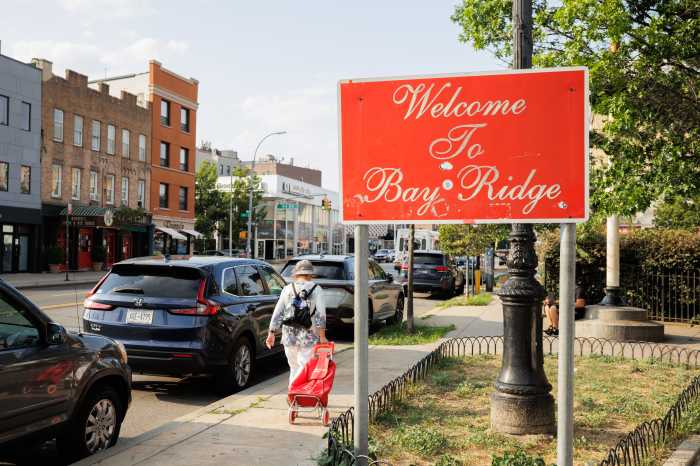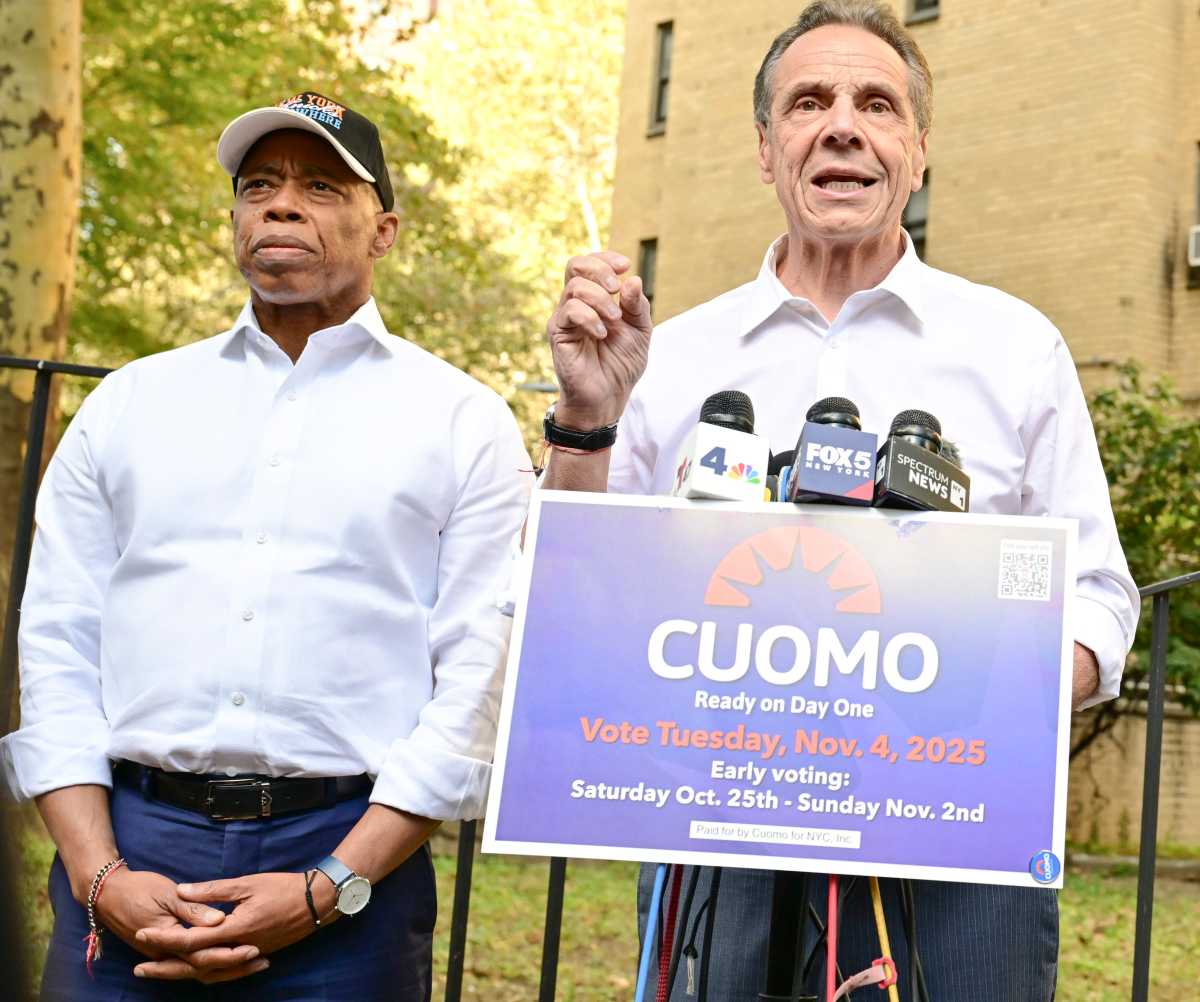Voters from Staten Island and Brooklyn filed a lawsuit Monday challenging the NY-11 congressional map, targeting Rep. Nicole Malliotakis’ seat — the city’s only Republican-held district — and arguing that the current boundaries weaken the political influence of Black and Latino residents “unconstitutionally.”
The lawsuit, filed in state court, claims the district’s current configuration — which includes all of Staten Island and parts of southern Brooklyn, including Bay Ridge, Dyker Heights, Bensonhurst and Fort Hamilton — fails to reflect the borough’s changing demographics. The plaintiffs say the map denies communities of color the opportunity to “routinely and systematically influence elections,” according to the suit.
They also argue that the district lines violate the state’s Voting Rights Act and “the state constitution’s prohibition against racial vote dilution.”
“The racial demographics of Staten Island have changed significantly over the last several decades, but the 2024 Congressional Map does not reflect those changes,” the plaintiffs said in their complaint. They said the borough’s combined Black and Latino population has increased from 11% to 30% over the past 40 years.
Malliotakis, a Republican first elected to Congress in 2020, currently represents District 11. Before that, she served in the New York State Assembly from 2011 to 2020, representing parts of Staten Island and Brooklyn for five terms. The daughter of a Greek father and a Cuban mother who fled political exile, Malliotakis identifies as both Greek and Hispanic. In 2010, she became the first Hispanic American to win elected office in Staten Island.
The suit’s plaintiffs are calling for a redraw that would connect Staten Island to parts of lower Manhattan, creating what they describe as a “minority-influence district.” If successful, the lawsuit could reshape the state’s congressional landscape, potentially flipping a Republican seat and strengthening Democrats’ efforts to regain control of the U.S. House.
State pushback
Republican leaders swiftly condemned the filing. In a statement, New York GOP Chair Ed Cox blasted the legal effort as a “frivolous attempt to circumvent” prior court rulings.
“This new lawsuit is a frivolous attempt to circumvent the clear reading of both the New York State Constitution and the Court of Appeals decisions concerning redistricting,” Cox said. “This latest lawsuit, brought by the same lawyers who previously defended the unconstitutional state gerrymander in 2022, is seeking a blatant racial gerrymander in violation of the Equal Protection Clause of the 14th Amendment.”
“Everyone should see this effort for what it is: a naked attempt to disenfranchise voters in NY-11 and elect a Democrat to this congressional district contrary to the will of voters,” Cox continued.

In a statement to Brooklyn Paper, Malliotakis deemed the suit “frivolous.”
“This is a terrible abuse of the legal process by an ultra-partisan Washington law firm that does the bidding of the national Democratic Party in an attempt to tilt the scales to give their party an advantage in next year’s election,” she said.
In contrast, Democratic Rep. Dan Goldman — who represents NY-10, covering lower Manhattan and much of western Brooklyn — said “flipping the House isn’t optional.”
“If Staten Island is drawn into my district, then I will be ready to step up and take the fight for democracy and a Democratic House majority to Nicole Malliotakis’ doorstep,” Goldman said. “Nothing can stand in the way of us defeating Donald Trump and his spineless lackeys in Congress.”
A national battle over representation
The case comes amid renewed national battles over redistricting, following Republican-led efforts in states such as Texas, Missouri and North Carolina to solidify GOP advantages.
In August, Gov. Kathy Hochul signaled that she would support redrawing New York’s congressional maps in response. “Republicans are law-breaking cowboys,” Hochul told NBC News, adding that she was open to working with Democratic lawmakers to revisit the state’s redistricting process. Other states, including California and Virginia, have also begun their own efforts to counter GOP-led plans.
New York currently sends 19 Democrats and seven Republicans to the U.S. House. If District 11 were redrawn to favor Democrats, it could become a crucial pickup in what’s expected to be another fiercely contested national map fight in the 2026 midterm elections.
Legal and political consequences
Jeffrey Wice, a professor at New York Law School and an expert on redistricting and voting rights, said the case could move quickly through the courts given the upcoming election timeline.
“This will be fast-tracked by the courts for a new map to be drawn in the event of the plaintiffs’ win,” Wice told Brooklyn Paper. “The challenge has to go through a two-month or less hearing by the State Supreme Court in Manhattan. The losing parties can appeal to the Appellate Division, followed by an appeal to the State Supreme Court, with the 2026 congressional petitioning period starting in late February.”
Wice said one of the key issues before the court will be whether the plaintiffs can demonstrate a “high level of racially polarized voting” to justify creating an additional district. He noted, however, that the case faces a significant legal hurdle: “The State Voting Rights Act is mentioned in the complaint, but it does not govern the law for congressional redistricting.”

Wice called the plaintiffs’ approach “a novel one.”
“The State Voting Rights Act applies to local governments — counties, towns, cities, school boards and villages — but was not intended to impact congressional redistricting,” he said.
He added that any changes to the district could significantly alter the political balance of Malliotakis’ seat.
“Any change to the districts could imperil Malliotakis’ ability to get reelected, as Staten Island joined with parts of lower Manhattan; something that has not happened since the 1970s.”
Wice also noted that the district has shifted over the decades since the construction of the Verrazzano-Narrows Bridge.
“Staten Island used to share with Manhattan, but that ended in the 1980s when the district was redrawn after the 1980 census to connect Staten Island with Brooklyn,” he said. “A Democrat won that district then, but subsequently lost it after 1990.”

























